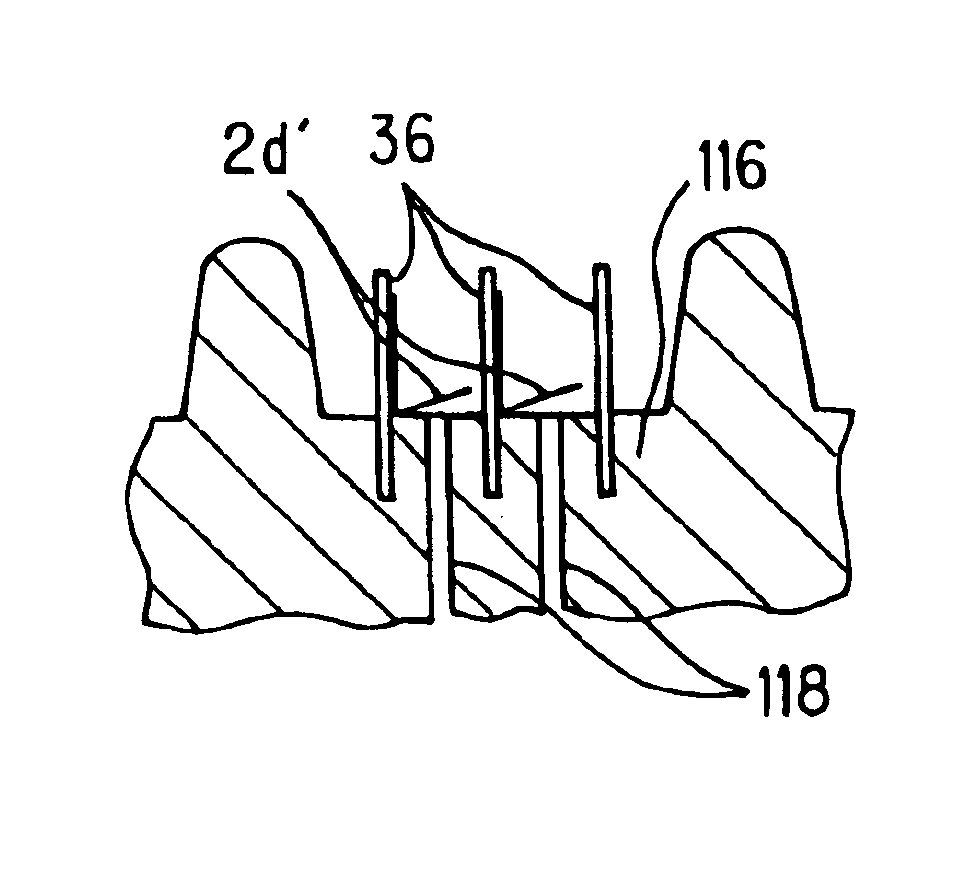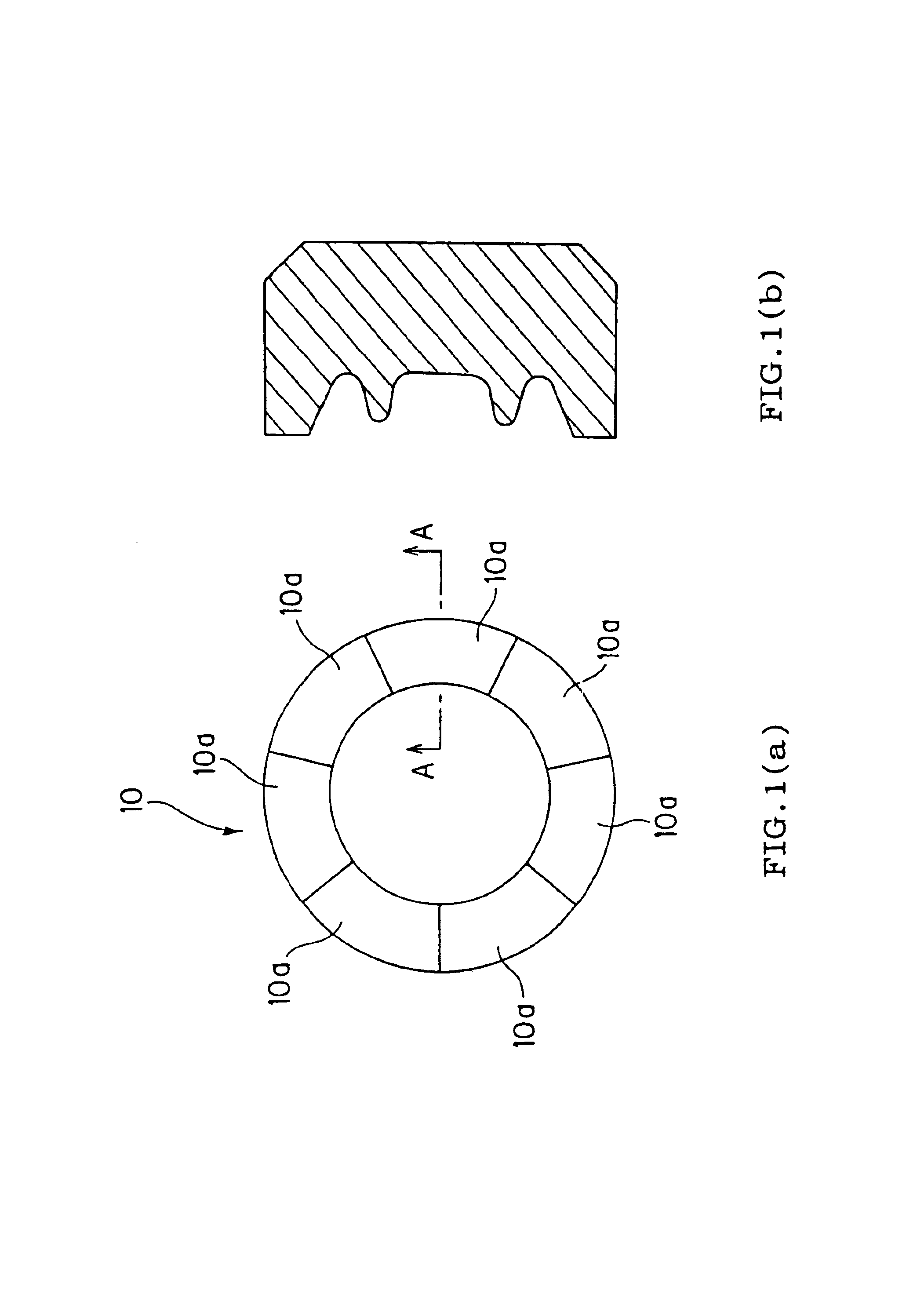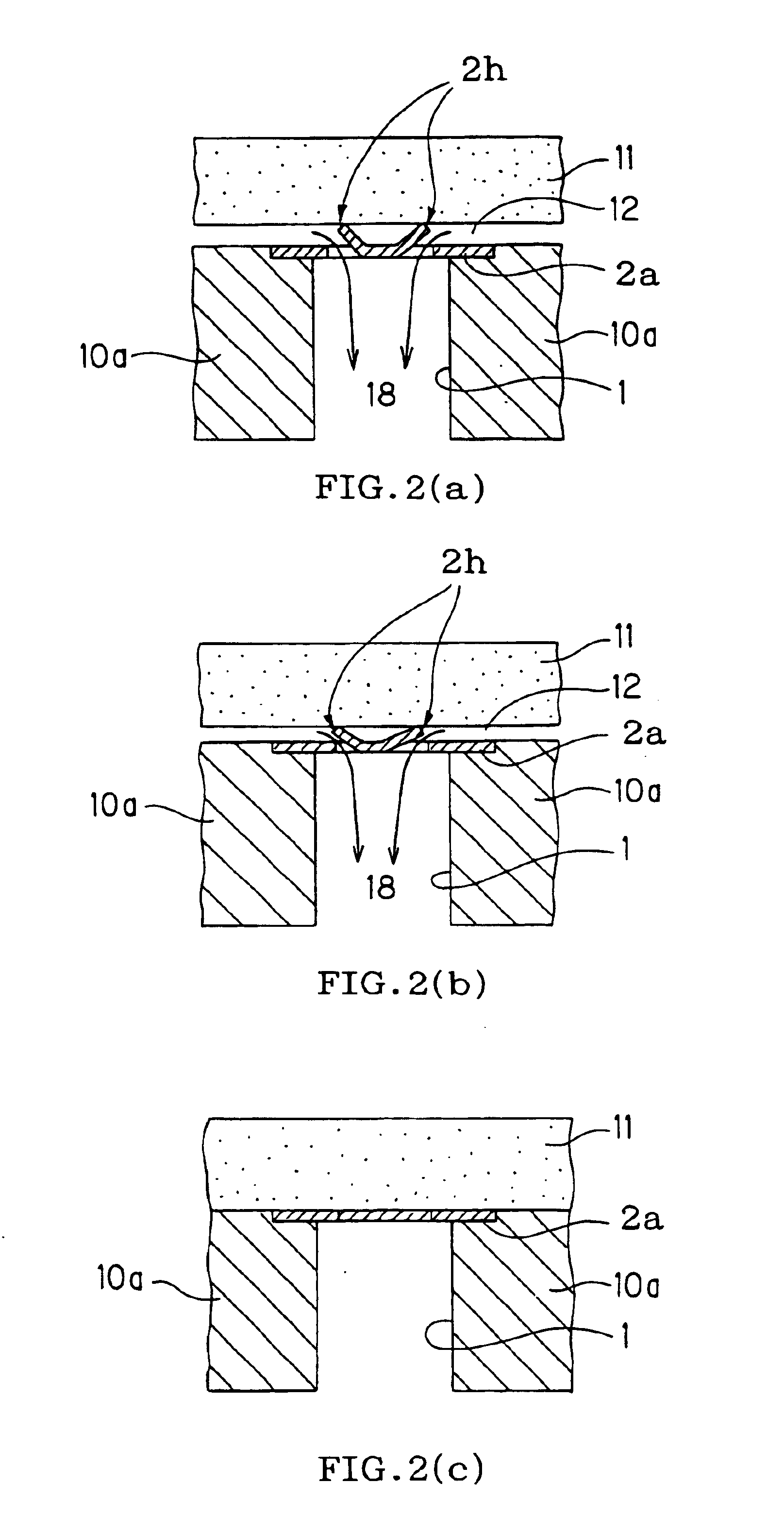Mold for molding a tire
- Summary
- Abstract
- Description
- Claims
- Application Information
AI Technical Summary
Benefits of technology
Problems solved by technology
Method used
Image
Examples
embodiment 1
A mold divided into 7 units (a configuration of 1 set of a complete mold with 7 sub-molds 10(a) along the circumference using segmented molds as shown in FIGS. 1(a) and 1(b) are produced via aluminum alloy casting methods (plaster casting methods) (material: foam plaster and aluminum alloy material AC4C (Si 7%, Cu 0.8%, Mg 0.4%, and Al as the remainder) using a plaster cast. In this event, the initial setting for the number of individual ventholes is 1376 per set.
Next, into a sub-mold 200a where a venthole 201 and a counterboring 205 as shown in FIG. 34(a) are formed via machining with the production process is inserted as shown in FIGS. 34(d) to 34(f) a positioning tube 204 (material: SUS304) as shown in FIGS. 34(a) to 34(f) and a ventlid 202 (material: SUS304) having a lid 203 as shown in FIG. 34(b). In this event, the positioning tube 204 is provided by caulking in a sub-mold 200a (FIG. 34(d)), the ventlid 202 is put in place on top of the positioning tube 204 (FIG. 34(e), and th...
embodiment 2
As shown in FIGS. 35(a) to 35(c), a mold for molding a tire as indicated in Embodiment 1 was produced in the same manner as Embodiment 1 with the exception of changing the depth of the counterboring 205 of the sub-mold 200a to 3.10 mm, the diameter of the lid 203 of the ventlid 202 to 2.0 mm, and the tab thickness to 0.1 mm.
With continuous molding of a tire using a mold produced in this manner, air inclusion defects did not occur and a tire was formed with almost no burrs in the lid portion of the ventlid.
Further, concave impressions in locations corresponding to the lid portion of the ventlid in the tire in this event fell below 0.05 mm and a satisfactory external appearance and quality in comparison to Embodiment 1 were obtained.
Further, maintenance of the air removal characteristics was confirmed even after continuous molding of 20000 tires.
embodiment 3
As shown in FIGS. 36(a) to 36(d), a mold for molding a tire as indicated in Embodiment 1 was produced in the same manner as Embodiment 1 with the exception of changing the shape of the counterboring 205 of the sub-mold 200a to an undercut by cast removal and production of the shape of the ventlid 202 as shown in FIG. 36(b) with an additive silicon rubber (Toray Silicone, brand name: SH9555).
In this event as shown in FIGS. 36(c) to 36(d), the ventlid 202 was inserted in a sub-mold 200a using an undercut. With continuous molding of a tire using a mold produced in this manner, air inclusion defects did not occur and a tire was formed with almost no burrs in the lid portion of the ventlid.
Further, there were almost no concave impressions in locations corresponding to the lid portion of the ventlid in the tire in this event. Further, maintenance of the air removal characteristics was confirmed even after continuous molding of 20000 tires.
PUM
| Property | Measurement | Unit |
|---|---|---|
| Angle | aaaaa | aaaaa |
| Angle | aaaaa | aaaaa |
| Flexibility | aaaaa | aaaaa |
Abstract
Description
Claims
Application Information
 Login to View More
Login to View More - R&D
- Intellectual Property
- Life Sciences
- Materials
- Tech Scout
- Unparalleled Data Quality
- Higher Quality Content
- 60% Fewer Hallucinations
Browse by: Latest US Patents, China's latest patents, Technical Efficacy Thesaurus, Application Domain, Technology Topic, Popular Technical Reports.
© 2025 PatSnap. All rights reserved.Legal|Privacy policy|Modern Slavery Act Transparency Statement|Sitemap|About US| Contact US: help@patsnap.com



